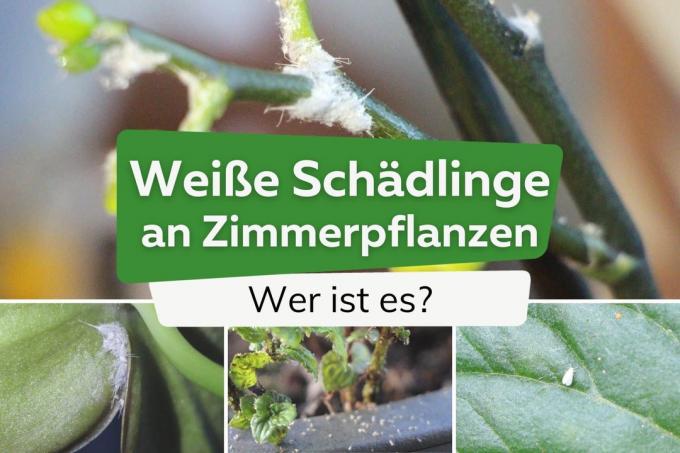
When white pests show up on houseplants, the first question that arises is who it is. The following article explains what they look like and how ideally they are combated.
In a nutshell
- Leaf discoloration often indicates pest infestation
- least vermin actually knows
- many also transparent, yellowish or greenish
- if infested, first wipe off pests, wash plant, isolate
- If possible, use home remedies to combat it and avoid chemical agents
Table of contents
- Aphids (Aphidoidea)
- scale insect (Coccoidea)
- Spider mites (Tetranychidae)
- Springtail (Collembola)
- Thrips (Thysanoptera)
- Fungus Gnat (Sciaridae)
- Whitefly (Trialeurodes vaporariorum)
- Mealybug (Pseudococcidae)
- frequently asked Questions
Aphids (Aphidoidea)
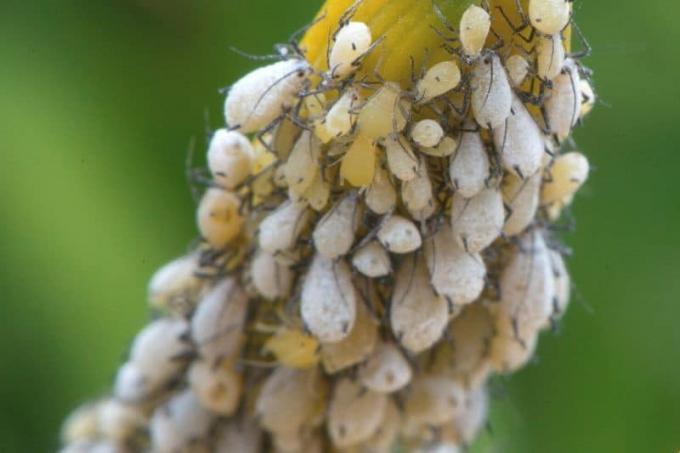
The most common pests on houseplants are the aphids. They usually appear in colonies, prick the leaves of the plants and thus suck the plant sap:
- white to greenish with black legs
- only a few millimeters in size
- but sticky secretion
- Found on the underside of young leaves and fresh shoots
- do not prefer any particular plant
- Wipe off the lice and rinse the plant with water
scale insect (Coccoidea)
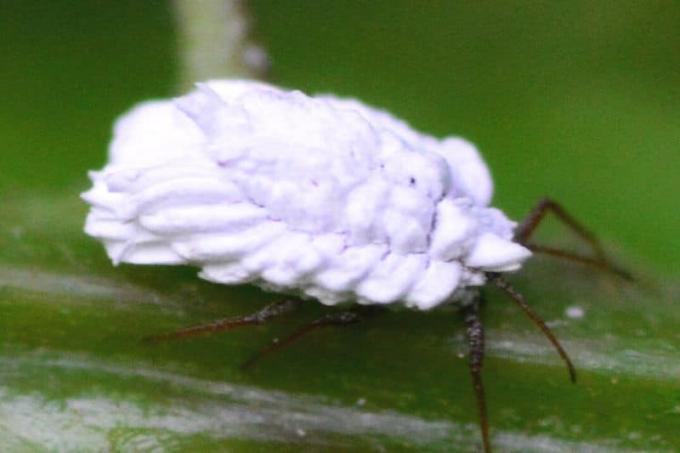
These light-colored, mostly white, pests can camouflage themselves well due to their waxy shield and are often mistaken for wood, bark or soil on indoor plants:
- white to light brown oval-round insects
- up to six millimeters in size
- mainly affect weakened plants
- prefer a warm, dry location
- Leaves curl up and are covered with a sticky coating
- Add 10 milliliters of spirit and soft soap to one liter of water and spray
A notice: scale insects prefer a dry and warm climate. Therefore, always ensure sufficient humidity in winter.
Spider mites (Tetranychidae)

These pests feel particularly comfortable in warm, dry rooms and are therefore usually active on indoor plants in the winter months:
- globular white to red insects
- about 2 millimeters in size
- no favorite plants
- Leaves turn blotchy and fall off
- Spray plants with water and increase humidity
- Use predatory mites if there is a heavy infestation
Tip: predatory mites, parasitic wasps and other natural predators of the pests are available in well-stocked specialist shops. The advantage: once they have done their job and destroyed the pests on indoor plants, they simply die off.
Springtail (Collembola)

The white-gray springtail can also be easily recognized by its conspicuous dark head antennae:
- up to five millimeters long
- can jump
- preferably on young plants and shoots
- an infestation can also be recognized by the eaten edges of flowers and leaves
- Rinse plants with a strong jet of water
- ideally several days in a row
A notice: Due to this jumping ability, there is often a risk of confusion with fleas. However, these are usually dark in color.
Thrips (Thysanoptera)

If the leaves of the actually decorative houseplant suddenly turn yellow and dry out, then it can be an infestation by the larvae of the thrips act:
- white-yellowish larvae with a dark head
- up to a millimeter long
- preferably on the undersides of the leaves
- affects all plants that are warm and dry
- Increase humidity in the room
- Rinse plants several times with a strong jet of water
Fungus Gnat (Sciaridae)
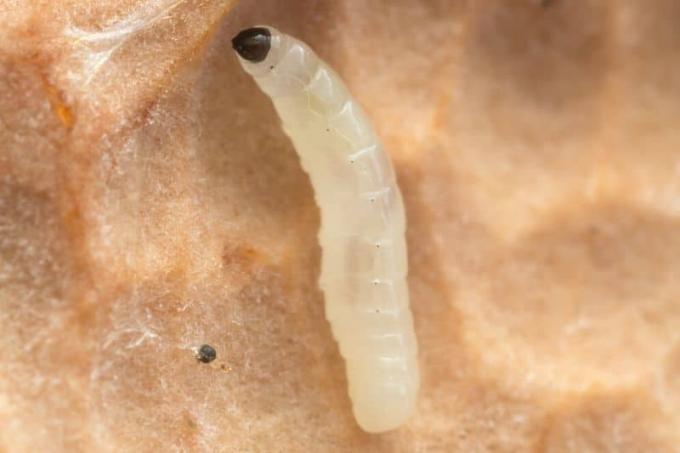
The larvae of the fungus gnat are also pests that must be combated, as they can cause great damage to indoor plants:
- up to seven millimeters long white larvae with a black head
- prefer to sit in potting soil
- in addition to vegetable plants, ornamental plants are also attacked
- transmit bacteria or fungi to plants
- Stunted growth and deformed leaves indicate infestation
- Tobacco in the ground helps against the pest
Tip: Don't keep the plants too moist as larvae prefer it. Yellow stickers also help against the adult animals that lay their eggs on the plants.
Whitefly (Trialeurodes vaporariorum)
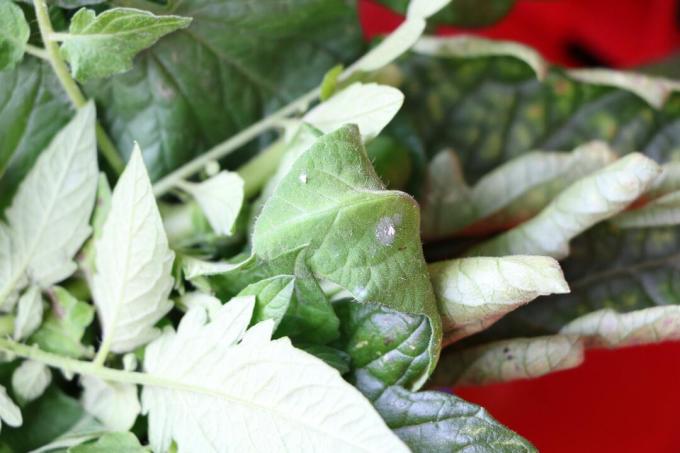
Make an infestation with the Greenhouse whitefly, as this white pest is actually called, sticks to indoor plants, then the plants stand usually in the wrong location and should be placed immediately in a well-ventilated, cool place become:
- white, oval insects with wings
- grow up to three millimeters long
- do not prefer certain plants
- found in warm, moist locations
- recognizable by the sticky substance and discolored leaves
- Ichneumon wasps help fight it
Mealybug (Pseudococcidae)

This white pest on indoor plants protects itself from predators with its dense, cotton-like hairs and must therefore be combated in other ways:
- oval body, white to red, white cotton wool around body
- up to four millimeters long
- prefers succulents but also other plants
- stays in warm and dry locations
- recognizable by spots on the leaves that later die off
- A mixture of soft soap and spirit with water helps
A notice: Mealybug is also called mealybug known.
frequently asked Questions
The fact is that a well-groomed plant is less affected than one weakened by various care mistakes. Therefore, the ideal care is always the best prevention against pests of all kinds. Household remedies such as field horsetail broth or a broth made from nettles can also strengthen houseplants.
As a rule, you should only use chemical agents if nothing else helps. Home remedies used at an early stage can effectively combat pests. However, the commercially available insecticides always harbor the risk of killing not only the pests but also various beneficial insects.
If the pests are only on one or maybe two houseplants, then it is advisable to isolate them from all other plants in the room or conservatory. After they have been adequately treated, for example washed off, the plants must be quarantined alone until the pest infestation has been eliminated.



